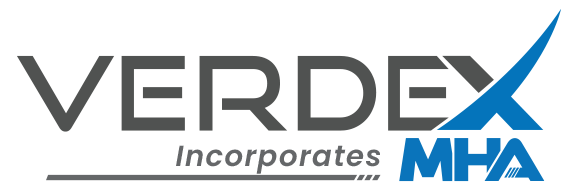Ultimate Guide to Choosing the Right Lifting Equipment for Your Needs
Date Posted:30 August 2024
Verdex offers a comprehensive range of lifting equipment to suit diverse needs and industries. Explore our selection today and discover the perfect solution for your lifting challenges.
In the bustling world of modern business, choosing the right lifting equipment isn’t just about moving things from A to B—it's about optimising efficiency, enhancing safety, and boosting productivity. With a multitude of options available, from hydraulic lifts to electric hoists, finding the perfect fit for your needs can feel like navigating a maze. But fret not! This ultimate guide will demystify the process and help you select the lifting equipment that aligns perfectly with your operational demands.
Understanding Your Lifting Needs
Before diving into the specifics of various lifting equipment, it’s crucial to assess your needs. Different tasks require different solutions, so take a step back and evaluate:
- Type of Load: What are you lifting? Is it heavy machinery, bulky materials, or delicate items? Understanding the type and weight of your load is fundamental in choosing equipment that can handle the job safely and efficiently.
- Frequency of Use: How often will the equipment be used? For high-frequency tasks, investing in robust, durable equipment may be worth the extra cost. For occasional use, a more cost-effective option might suffice.
- Operating Environment: Consider the environment in which the equipment will be used. Will it be in a warehouse, a construction site, or a retail space? The environment affects the type of lifting equipment that will perform best and endure the conditions.
- Space Constraints: Assess the space where the equipment will operate. Is the area tight and confined, or is there ample room to manoeuvre? This will impact your choice, particularly in terms of equipment size and manoeuvrability.
Types of Lifting Equipment
With your needs clearly defined, it’s time to explore the various types of lifting equipment available. Here’s a rundown of popular options:
- Hydraulic Lifts: Ideal for lifting heavy loads with precision, hydraulic lifts use fluid power to elevate and lower items. They are commonly used in warehouses and industrial settings where heavy machinery and equipment need to be moved.
- Electric Hoists: Perfect for lifting and lowering loads vertically, electric hoists are powered by electric motors. They offer smooth operation and are suitable for a range of applications, from construction sites to factories.
- Cranes: Cranes come in various forms—tower cranes, overhead cranes, and mobile cranes, to name a few. They are designed for lifting and moving large, heavy objects over considerable distances, making them essential in construction and large-scale manufacturing.
- Forklifts: Known for their versatility, forklifts can lift, transport, and stack materials with ease. They are a staple in warehouses and logistics centres, offering a practical solution for moving goods around.
- Scissor Lifts: These lifts extend vertically and are ideal for accessing elevated areas. They are often used for maintenance tasks and are a great choice when working at height is required.
- Pallet Jacks: Ideal for moving pallets and smaller loads, pallet jacks are manually operated and offer a cost-effective solution for light to moderate lifting tasks in a variety of settings.
Key Considerations When Choosing Lifting Equipment
Selecting the right lifting equipment involves more than just picking the most powerful option. Here are some critical factors to consider:
- Load Capacity: Ensure the equipment can handle the maximum weight of the items you plan to lift. Overloading equipment can lead to accidents and damage, so always choose equipment with a capacity that exceeds your needs.
- Safety Features: Look for equipment with built-in safety features such as emergency stop buttons, load sensors, and secure braking systems. Safety should always be a priority to protect your team and prevent accidents.
- Ease of Use: Choose equipment that is user-friendly and easy to operate. Intuitive controls and clear instructions will ensure that your staff can use the equipment efficiently and safely.
- Maintenance Requirements: Consider the maintenance needs of the equipment. Regular maintenance is crucial for keeping lifting equipment in good working condition, so select equipment that is easy to service and maintain.
- Cost vs. Value: While it’s tempting to opt for the cheapest option, consider the long-term value. Investing in high-quality equipment might have a higher initial cost but can offer greater durability, efficiency, and lower maintenance costs over time.
- Supplier Support: Choose a supplier who offers reliable support and service. Good customer service and after-sales support can be invaluable in resolving issues and ensuring that your equipment remains in top condition.
Making the Decision
Armed with knowledge of your needs and an understanding of different lifting equipment options, you’re ready to make an informed decision. Here’s a quick checklist to help you finalise your choice:
- Match Equipment to Needs: Ensure the equipment you choose aligns with the type of load, frequency of use, and operating environment.
- Evaluate Key Features: Assess load capacity, safety features, ease of use, and maintenance requirements to ensure the equipment meets your operational standards.
- Consider Long-Term Value: Balance the initial cost with the long-term benefits of quality and durability.
- Seek Expert Advice: Consult with suppliers and industry experts to get recommendations tailored to your specific needs.
- Test Before You Buy: If possible, test the equipment to ensure it performs as expected and fits your operational requirements.
Choosing the right lifting equipment is a critical step in enhancing your business operations. By understanding your needs, exploring various types of equipment, and considering key factors, you can make an informed decision that boosts efficiency, safety, and productivity.




























































































































 Trolleys & Hand Trucks
Trolleys & Hand Trucks Cage Trolleys
Cage Trolleys Cleaning Carts & Trolleys
Cleaning Carts & Trolleys Construction Trolleys
Construction Trolleys Hand Trucks & Dollies
Hand Trucks & Dollies Laundry/Linen Trolleys
Laundry/Linen Trolleys Lifting Trolleys
Lifting Trolleys Order Picking Trolleys
Order Picking Trolleys Panel Cart Trolleys
Panel Cart Trolleys Platform Trolleys
Platform Trolleys Powered Trolleys
Powered Trolleys Shelf & Tiered Trolleys
Shelf & Tiered Trolleys Stainless Steel Trolleys
Stainless Steel Trolleys Tool Trolleys
Tool Trolleys Utility & Service Carts
Utility & Service Carts Lifting & Handling Equipment
Lifting & Handling Equipment Forklift Attachments
Forklift Attachments Jib Attachments
Jib Attachments Lifting Hoists & Pallet Hooks
Lifting Hoists & Pallet Hooks Load Skates & Tow Tugs
Load Skates & Tow Tugs Manual Stackers & Lifters
Manual Stackers & Lifters Pallet Jacks
Pallet Jacks Pallet Lifters
Pallet Lifters Pallet Rotators & Dispenser
Pallet Rotators & Dispenser Powered Pallet Trucks & Electric Lifters
Powered Pallet Trucks & Electric Lifters Scissor Lift Trolleys and Tables
Scissor Lift Trolleys and Tables Conveyor Equipment
Conveyor Equipment Conveyor Frames & Stands
Conveyor Frames & Stands Roller & Skate Conveyors
Roller & Skate Conveyors Ladders & Access Equipment
Ladders & Access Equipment Container & Yard Ramps
Container & Yard Ramps Ladders & Step Stools
Ladders & Step Stools Work Platforms & Crane Cages
Work Platforms & Crane Cages Drum Handling Equipment
Drum Handling Equipment Drum Storage & Bunding
Drum Storage & Bunding Drum Trolleys & Lifters
Drum Trolleys & Lifters Forklift Drum Handling
Forklift Drum Handling Dangerous Goods Storage & Spillage
Dangerous Goods Storage & Spillage Aerosol Cans Storage Cages
Aerosol Cans Storage Cages Bunded Pallets & Storage
Bunded Pallets & Storage Corrosive Goods Storage Cabinets
Corrosive Goods Storage Cabinets DG Storage & Trolleys
DG Storage & Trolleys Flammable Liquid Cabinets
Flammable Liquid Cabinets Forklift Gas Storage Cages
Forklift Gas Storage Cages Site Storage
Site Storage Spill Kits
Spill Kits Waste Handling & Bins
Waste Handling & Bins Bin Lifters & Tippers
Bin Lifters & Tippers Plastic Waste & Wheelie Bins
Plastic Waste & Wheelie Bins Steel Waste & Tipping Bins
Steel Waste & Tipping Bins Waste Carts
Waste Carts Shelving & Storage Equipment
Shelving & Storage Equipment Heavy Duty Cabinets
Heavy Duty Cabinets Heavy Duty Shelving
Heavy Duty Shelving Mega Bins & Pallets
Mega Bins & Pallets Packing & Workbenches
Packing & Workbenches Pallet Racking Accessories
Pallet Racking Accessories Parts Trays & Stor-Pak Bins
Parts Trays & Stor-Pak Bins Pegboard & Louvre Panels
Pegboard & Louvre Panels Plastic Bins & Crates
Plastic Bins & Crates Plastic Handling Solutions Bins
Plastic Handling Solutions Bins Plastic Pallets
Plastic Pallets Stack & Nest Bins
Stack & Nest Bins Stillage & Transport Cages
Stillage & Transport Cages Workplace Equipment
Workplace Equipment Modular Workbenches
Modular Workbenches Electric Height-Adjustable Workbenches
Electric Height-Adjustable Workbenches Floor Matting
Floor Matting General Workplace Equipment
General Workplace Equipment Industrial Weighing Scales
Industrial Weighing Scales Packaging Machinery
Packaging Machinery Stationery Cupboards
Stationery Cupboards Storage and Stillage Cages
Storage and Stillage Cages Tool Trolleys
Tool Trolleys Tooling Cabinets
Tooling Cabinets Safety Barriers, PPE & Signage
Safety Barriers, PPE & Signage Barriers & Bollards
Barriers & Bollards First Aid Equipment
First Aid Equipment Gloves, Knives and PPE
Gloves, Knives and PPE Signage
Signage Cleaning & Site Supplies
Cleaning & Site Supplies Cleaning Equipment
Cleaning Equipment Cleaning Trolleys
Cleaning Trolleys Rubbish Bins
Rubbish Bins Signs & Traffic Supplies
Signs & Traffic Supplies Construction Equipment
Construction Equipment Construction Trolleys
Construction Trolleys Waste Handling
Waste Handling General Site Equipment
General Site Equipment Concrete Equipment
Concrete Equipment Site Storage
Site Storage Lifting Equipment
Lifting Equipment Verdex Specials
Verdex Specials











